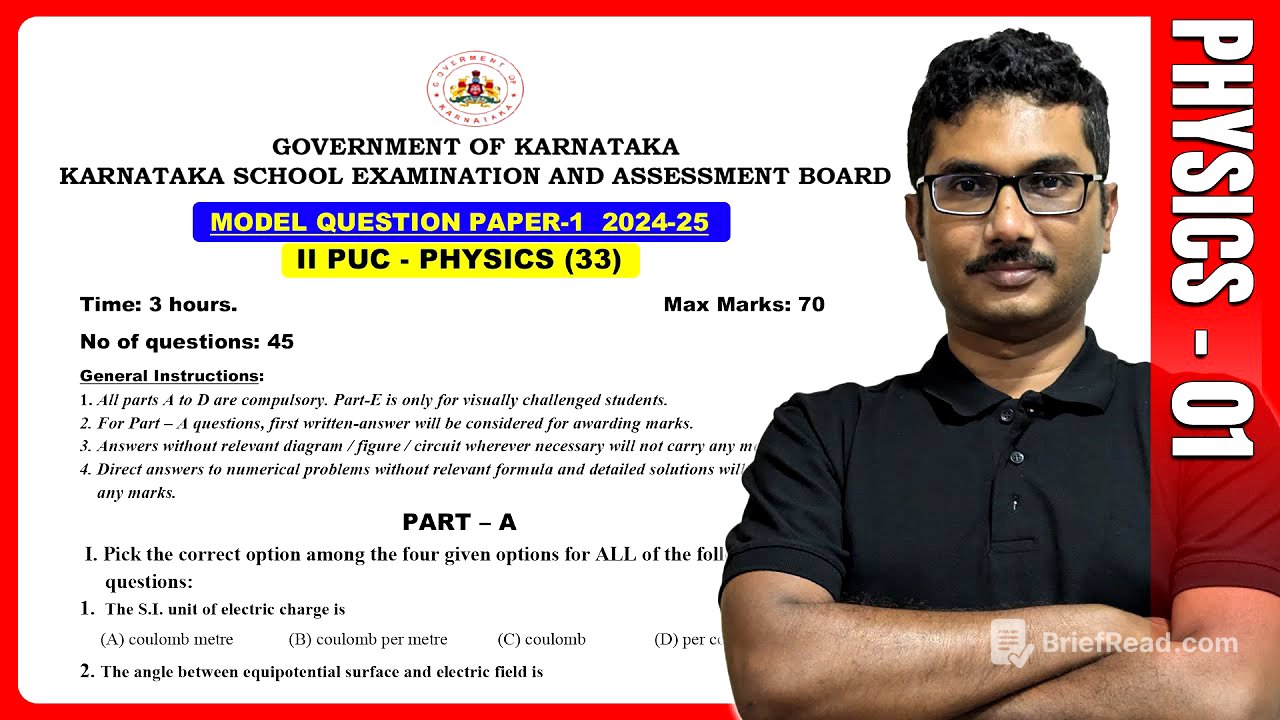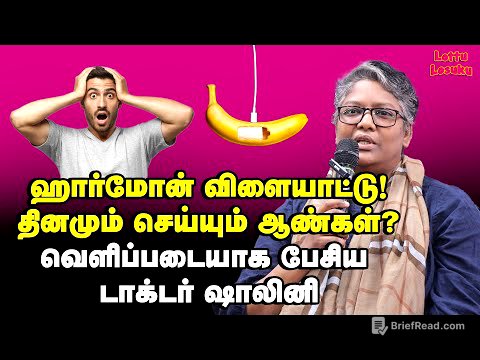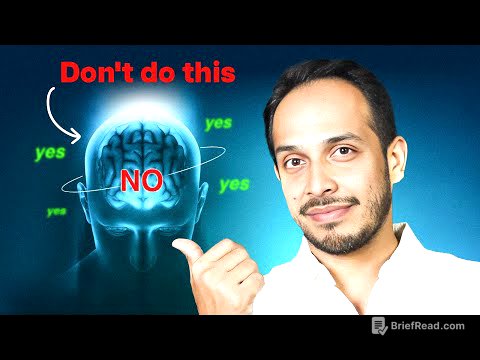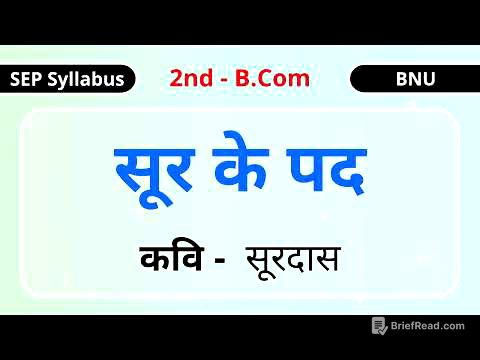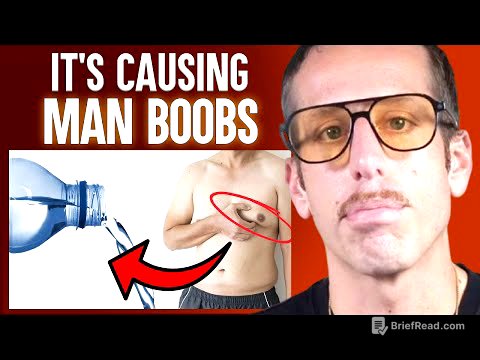TLDR;
Alright, so this video is basically a walkthrough of the first model question paper for Physics (P2) published by the Karnataka PU Board. The aim is to help students tackle the MCQs and other question types, especially statement-based ones. The video also points out some errors in the model paper and offers tips for solving numericals.
- The video solves the first model paper, focusing on MCQs and other question types.
- It highlights potential errors in the model paper and provides correct solutions.
- It offers tips and tricks for solving different types of questions, including numericals.
Intro [0:00]
The video kicks off with an introduction to the model question paper series. There are three model papers in total, each with a slightly different blueprint. The number of questions has been reduced to 45. The presenter aims to solve all three model papers on the channel, so viewers are encouraged to subscribe.
MCQ Section [1:44]
The video starts with the MCQ section, which many students find tricky. There are 15 MCQs in total.
- SI unit of electric charge: The answer is Coulomb (Kum).
- Angle between equipotential surface and electric field: The angle is always 90 degrees.
- Statement-based question on resistivity: Both statements are correct, and statement two is the correct explanation for statement one.
- Converting a galvanometer into a voltmeter: A high resistance needs to be connected in series with the galvanometer.
- Direction of a freely suspended bar magnet: It points in the North-South direction.
- Energy stored in an inductor: The energy stored is half Li square (½ LI²).
- Direction of induced current in a loop: This question has a mistake in the model paper. Both options B and C are correct depending on whether the current is increasing or decreasing.
- Ideal step-up transformer: It decreases the current.
- Displacement current: It is due to a changing electric field.
- Object placed in front of a concave mirror: It forms a virtual, enlarged, and erect image.
- Unpolarized light through Polaroids: The intensity of the emergent light is I by 2 cos² Theta (I/2 cos²θ).
- Emission of electrons by heating: It is called thermoionic emission.
- Alpha particles through a gold foil: Most of them go undeviated because most of the space in an atom is empty.
- Nuclei with the same atomic number: They are called isotopes.
- Matching question on energy band gaps: The correct match is: 1-B, 2-C, 3-A.
Fill in the Blanks [21:33]
The video then moves on to the fill-in-the-blanks section.
- A molecule with a permanent dipole moment is called polar.
- The net magnetic flux through any closed surface is zero.
- A rotating vector representing alternating quantities is called a phasor.
- A wavefront is a surface of constant phase.
- In interaction with matter, light behaves as if it is made up of packets of energy called photons.
Two-Mark Questions [22:41]
Next up are the two-mark questions.
- Gauss's law in electrostatics: State the law and provide the formula: Φnet = Q enclosed / ε₀.
- Drift velocity and mobility: Define drift velocity as the average velocity of free electrons under an electric field. Define mobility as drift velocity per unit electric field.
- Magnetic field at the midpoint of a solenoid: Use the formula B = μ₀nI.
- Principle of AC generator: It converts mechanical energy into electrical energy by changing the flux linked with the rotating coil. The current is called alternating because its direction changes periodically.
- Uses of ultraviolet radiation: UV radiation is used in LASIK eye surgery and to kill germs in water purifiers.
- Objectives in refracting and reflecting telescopes: Convex lens is used in refracting telescopes, and concave mirror is used in reflecting telescopes.
- Conditions for total internal reflection: Light must travel from a denser to a rarer medium, and the angle of incidence must be greater than the critical angle.
- Majority and minority charge carriers in an N-type semiconductor: Majority carriers are electrons, and minority carriers are holes.
Three-Mark Questions [30:34]
The video tackles the three-mark questions.
- Properties of electric field lines: Electric field lines never intersect, they start at positive charges and end at negative charges or infinity, and the density of field lines indicates the strength of the electric field.
- Effective capacitance of capacitors in parallel: Derive the formula C equivalent = C1 + C2.
- Lorentz force: Define Lorentz force as the force experienced by a charged particle moving through electric and magnetic fields. Provide the formula: F = Q(E + V x B).
- Differences between diamagnetic and paramagnetic substances: Diamagnetic substances are weakly repelled by magnetic fields, have small negative magnetic susceptibility, and induce a magnetic moment in the opposite direction of the applied field. Paramagnetic substances are weakly attracted by magnetic fields, have small positive magnetic susceptibility, and induce a magnetic moment in the same direction as the applied field.
- Experiment to demonstrate electromagnetic induction: Describe the experiment using a bar magnet and a coil connected to a galvanometer.
- Results of the experimental study of the photoelectric effect: No electrons are emitted if the frequency of incident light is below a threshold frequency, photo electron emission occurs without any noticeable delay, and the maximum kinetic energy of emitted electrons increases linearly with the frequency of incident light.
- Postulates of Bohr's atomic model: Electrons orbit in stable orbits, the orbital angular momentum is an integral multiple of h/2π, and electrons emit or absorb energy when they jump between orbits.
- Energy equivalent of one atomic mass unit: Use the formula E = mc² to calculate the energy in Joules and MeV.
Five-Mark Questions [44:50]
The video addresses the five-mark questions.
- Electric field at a point on the axis of an electric dipole: Derive the expression for the electric field.
- Effective EMF and internal resistance of cells in series: Derive the expressions for effective EMF and internal resistance.
- Magnetic field on the axis of a circular current loop: Derive the expression for the magnetic field.
- Interference of coherent waves: Obtain the expression for the resultant displacement and write the conditions for constructive and destructive interference.
- Full wave rectifier: Explain the working of a full-wave rectifier with a circuit diagram and input/output waveforms.
- Numerical problem on electric potential: Calculate the potential at a point due to a charge and the work done in moving another charge from infinity to that point.
- Numerical problem on current network: Find the current I3 in the given network.
- Numerical problem on AC circuit: Determine if the current leads or lags the voltage and calculate the phase difference.
- Numerical problem on prism: Find the refractive index of the prism and the new angle of minimum deviation when the prism is placed in water.
Outro [1:50:35]
The video concludes with a thank you and a reminder to subscribe for more model paper solutions.
